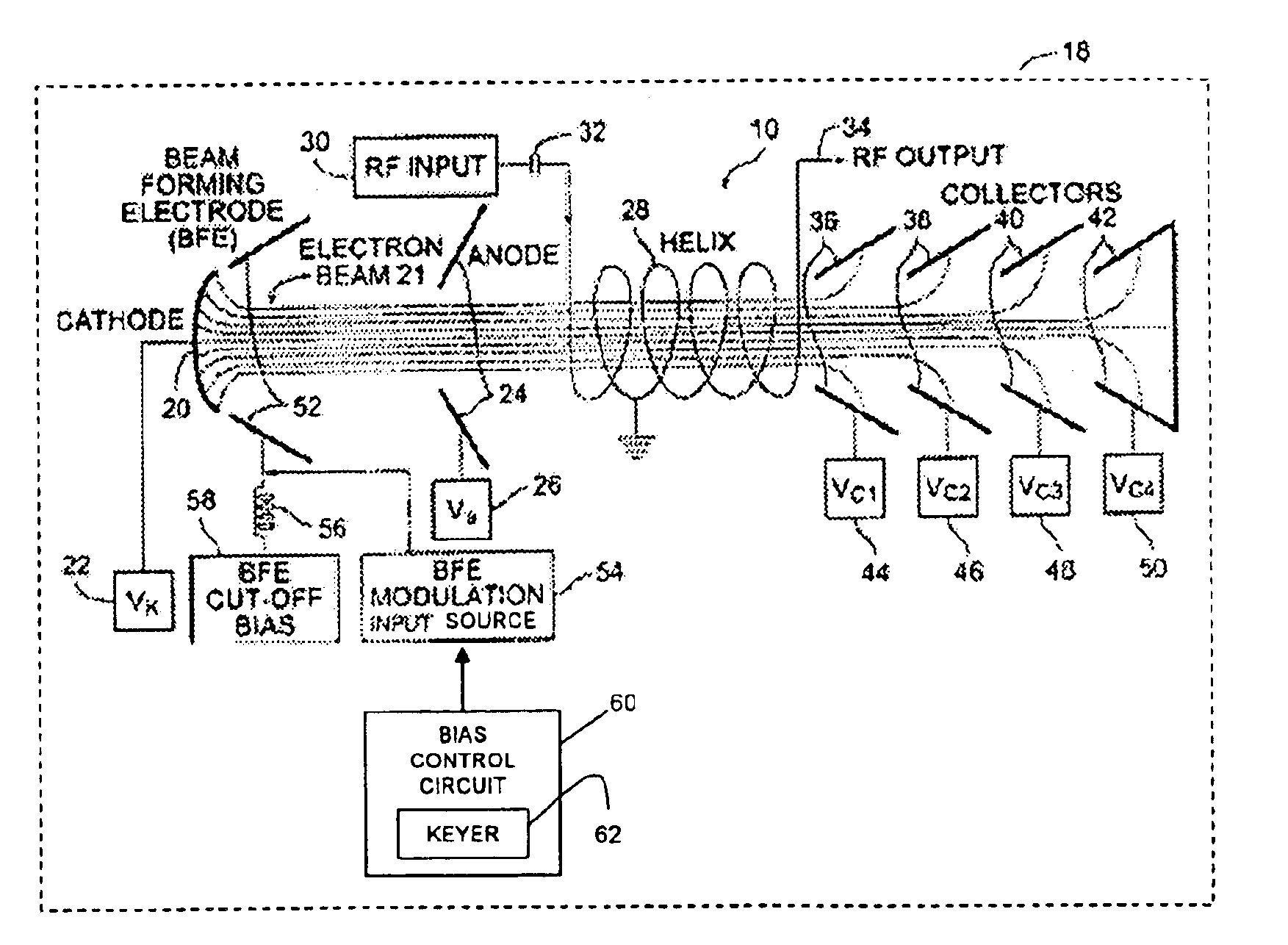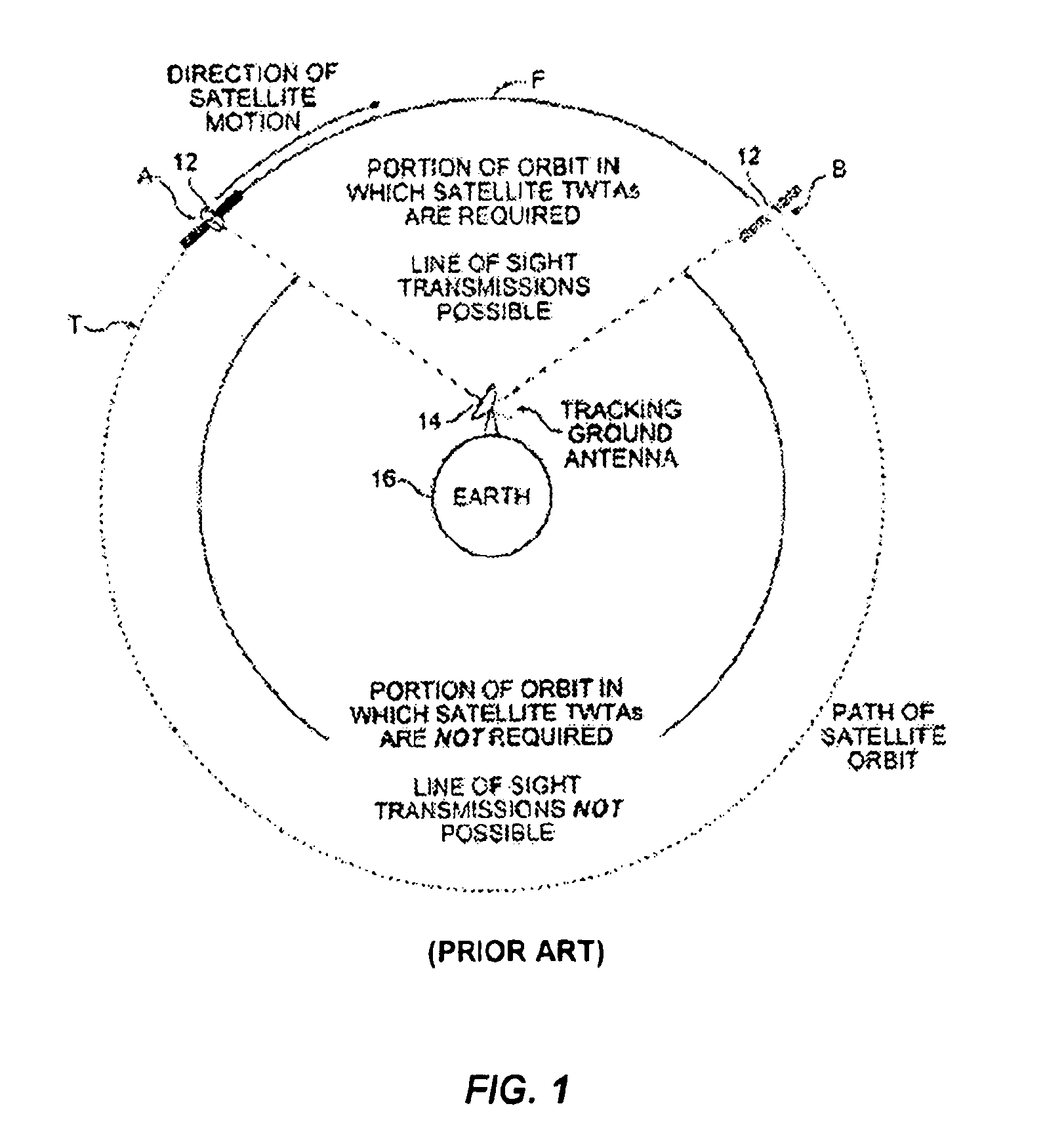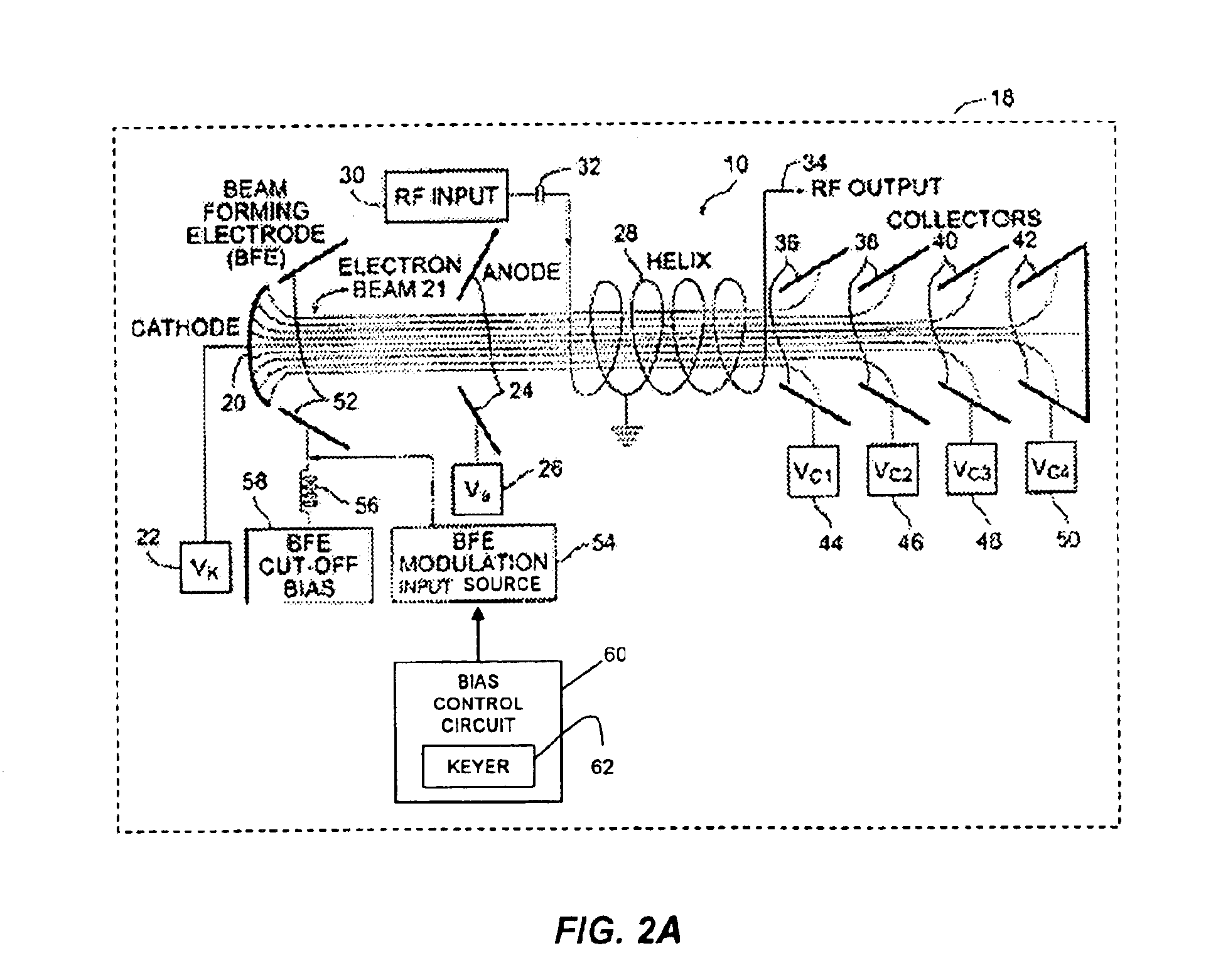Power regulator for intermittent use of traveling wave tube amplifiers in communications satellites
a technology of power regulator and traveling wave tube, which is applied in the direction of traveling wave tube, amplifier with transit-time effect, electric discharge tube, etc., can solve the problems of direct impact of satellite cost, unique environmental constraints, and satellite cost directly related, so as to reduce undesired power supply stress and improve reliability.
- Summary
- Abstract
- Description
- Claims
- Application Information
AI Technical Summary
Benefits of technology
Problems solved by technology
Method used
Image
Examples
case 1
[0024]In order to quantify the potential savings of this invention, three test cases assuming a representative satellite in the exemplary system have been simulated.[0025]Case 1 is a configuration that envisions that all amplifiers on the satellite are left on regardless of the amount of traffic demand. This is the simplest design / operational mode.[0026]Case 2 envisions that the TWTA pre-amplifiers be turned off as a function of traffic demand and (lack of) line of sight visibility. FIG. 4 is a graphical illustration showing the satellite dc power demand profile for a satellite operating with this assumption.[0027]Case 3 envisions use of the subject invention. FIG. 5 is a graphical illustration showing the dc power demand profile for the same satellite with the invention in use.
[0028]As can be seen by comparing FIGS. 4 and 5, the minimum and average power demands required drop significantly when the invention is used (FIG. 5).
[0029]FIG. 6 provides a table that summarizes key power d...
PUM
 Login to View More
Login to View More Abstract
Description
Claims
Application Information
 Login to View More
Login to View More - R&D
- Intellectual Property
- Life Sciences
- Materials
- Tech Scout
- Unparalleled Data Quality
- Higher Quality Content
- 60% Fewer Hallucinations
Browse by: Latest US Patents, China's latest patents, Technical Efficacy Thesaurus, Application Domain, Technology Topic, Popular Technical Reports.
© 2025 PatSnap. All rights reserved.Legal|Privacy policy|Modern Slavery Act Transparency Statement|Sitemap|About US| Contact US: help@patsnap.com



